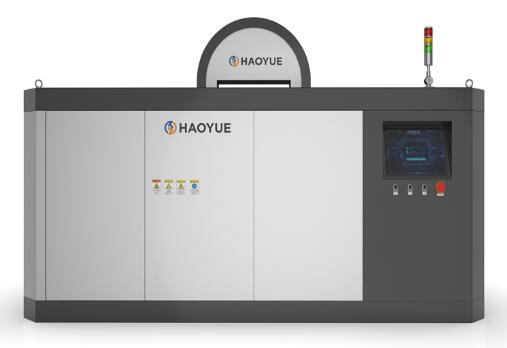Feb. 12, 25
Hot Isostatic Pressing (HIP) is a manufacturing process where a material is simultaneously subjected to high temperature and uniform pressure from all directions (isostatic pressure) to eliminate internal voids, increase density, and improve the mechanical properties of the material, typically used on metals and ceramics; essentially, it "sintering" the material under high pressure and heat to achieve near-theoretical density.

In the world of materials science and manufacturing, the pursuit of superior quality, reliability, and efficiency is ever-present. One advanced technique that helps achieve these goals is Hot Isostatic Pressing (HIP). This method plays a crucial role in the production of high-performance materials for industries such as aerospace, automotive, medical devices, and energy. If you're a manufacturer or a buyer looking for cutting-edge manufacturing techniques, understanding the process, benefits, and applications of HIP is essential.
Hot Isostatic Pressing (HIP) is a thermal and pressure treatment process used to improve the density, mechanical properties, and integrity of materials. The process involves subjecting a material to high pressure and temperature in an inert gas environment, typically argon. This combination of heat and pressure allows for the elimination of internal voids or porosity within the material, which can otherwise reduce its strength and performance. The result is a denser, stronger material that is more resistant to fatigue, wear, and corrosion.
The process is called "isostatic" because the pressure applied is uniform in all directions (isotropic) and acts on the material in a closed chamber. This ensures that the material undergoes an even transformation, enhancing its overall quality and mechanical properties.
The HIP process typically involves three main stages:
Loading: The material or part to be treated is loaded into a HIP chamber, where it is surrounded by an inert gas, often argon. The part could be made of metal, ceramics, or composites.
Pressurization and Heating: The chamber is sealed, and the pressure is gradually increased, typically up to 1000-2000 bar (14500-29000 psi). Simultaneously, the material is heated to a temperature that is typically between 900°C and 1300°C (1652°F – 2372°F), depending on the material being processed.
Cooling and Unloading: Once the material has been subjected to the required pressure and temperature, the chamber is slowly depressurized, and the material is allowed to cool at a controlled rate. The final result is a material with enhanced mechanical properties.
HIP offers several significant advantages over traditional manufacturing methods:
Improved Material Properties: The main benefit of HIP is the elimination of internal porosity, which can lead to weak points and reduced performance. By removing these voids, the material becomes more homogenous and dense, leading to improved strength, toughness, and fatigue resistance.
Enhanced Surface Finish: HIP can improve the surface finish of parts by closing surface pores, which is especially important in industries where parts need to meet stringent surface quality standards, such as aerospace and medical devices.
Complex Geometries: HIP is ideal for parts with complex geometries or intricate designs that are difficult to process using other methods. Its ability to apply uniform pressure in all directions ensures that even parts with intricate shapes benefit from enhanced material properties.
Reduced Defects: HIP can significantly reduce material defects, such as cracks, voids, and shrinkage, which can lead to part failure. By eliminating these defects, the process ensures higher quality, reliability, and longevity of parts.
Versatility: HIP can be used with a wide range of materials, including metals, ceramics, composites, and alloys. This makes it an ideal solution for industries that require diverse material applications.
Several industries have found significant advantages in utilizing Hot Isostatic Pressing for manufacturing high-performance parts:
Aerospace: The aerospace industry demands parts that are lightweight, durable, and able to withstand extreme conditions. HIP is used to improve the quality of critical components such as turbine blades, engine parts, and structural elements.
Automotive: In automotive manufacturing, HIP enhances the durability and performance of high-strength alloys and composites used in engine components, transmission systems, and safety-critical parts.
Medical Devices: HIP plays a key role in the production of implants, such as titanium hip replacements and dental implants, where material integrity is crucial for patient safety.
Energy: The energy sector, particularly in oil and gas, uses HIP to produce parts such as valves, pipes, and pressure vessels that must endure harsh environments and high pressure.
Additive Manufacturing: HIP is increasingly used to enhance the quality of 3D-printed parts. By reducing porosity and improving material density, it helps ensure the reliability of parts produced through additive manufacturing.
The global Hot Isostatic Pressing market has been growing steadily, driven by increased demand from industries such as aerospace, automotive, and medical devices. According to a report by Grand View Research, the global HIP market size was valued at approximately USD 2.3 billion in 2020 and is expected to grow at a compound annual growth rate (CAGR) of 5.8% from 2021 to 2028. This growth reflects the increasing adoption of HIP technology across various sectors and the ongoing advancements in material science and manufacturing processes.
For manufacturers, investing in Hot Isostatic Pressing technology provides a competitive edge in producing high-quality, durable parts that meet the stringent demands of modern industries. By incorporating HIP into their production processes, manufacturers can improve material performance, reduce defects, and enhance the overall reliability of their products.
For buyers looking for high-performance materials, HIP-treated parts offer superior quality and consistency, making them an excellent choice for critical applications in aerospace, automotive, medical, and energy sectors. Whether you're a manufacturer seeking to enhance your production capabilities or a buyer looking for the best materials, Hot Isostatic Pressing should be at the forefront of your considerations.
In a world where precision, strength, and durability are paramount, HIP represents the future of material enhancement, ensuring that parts meet the highest standards for performance and reliability.